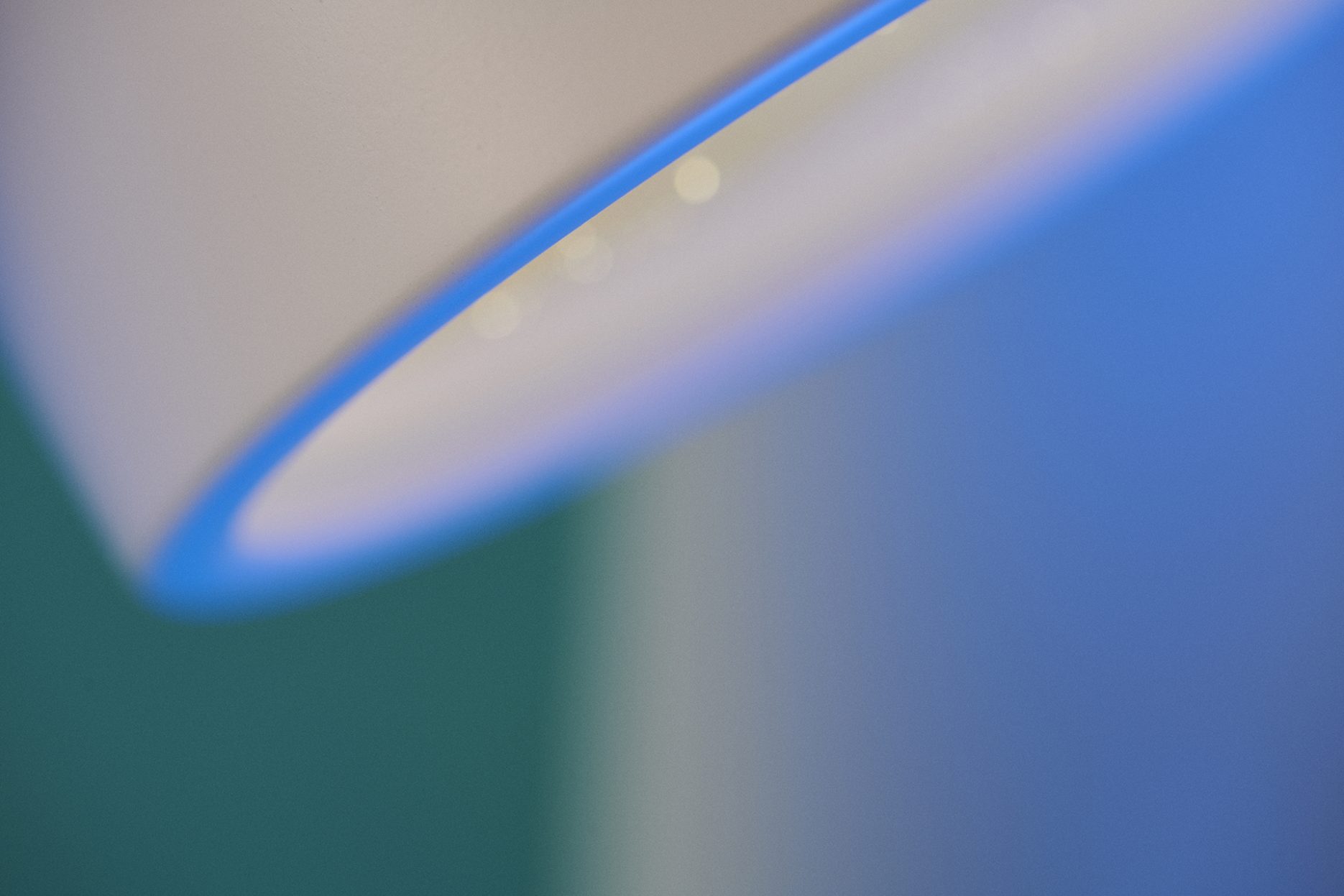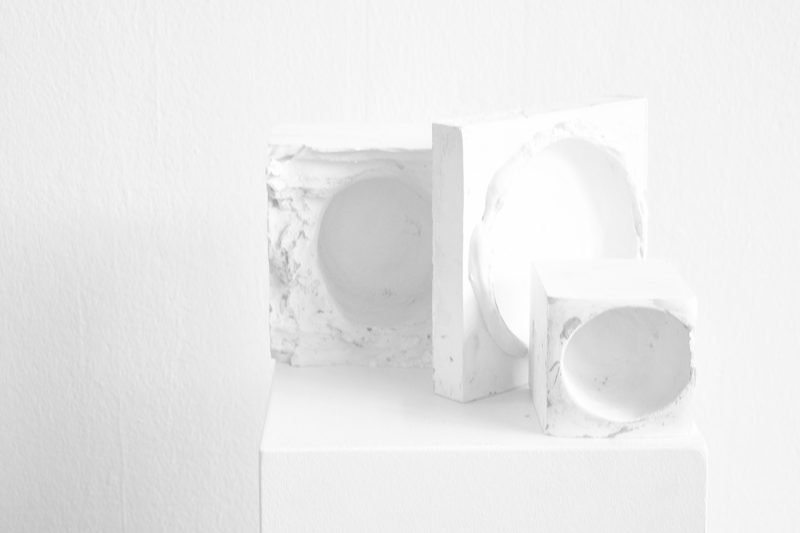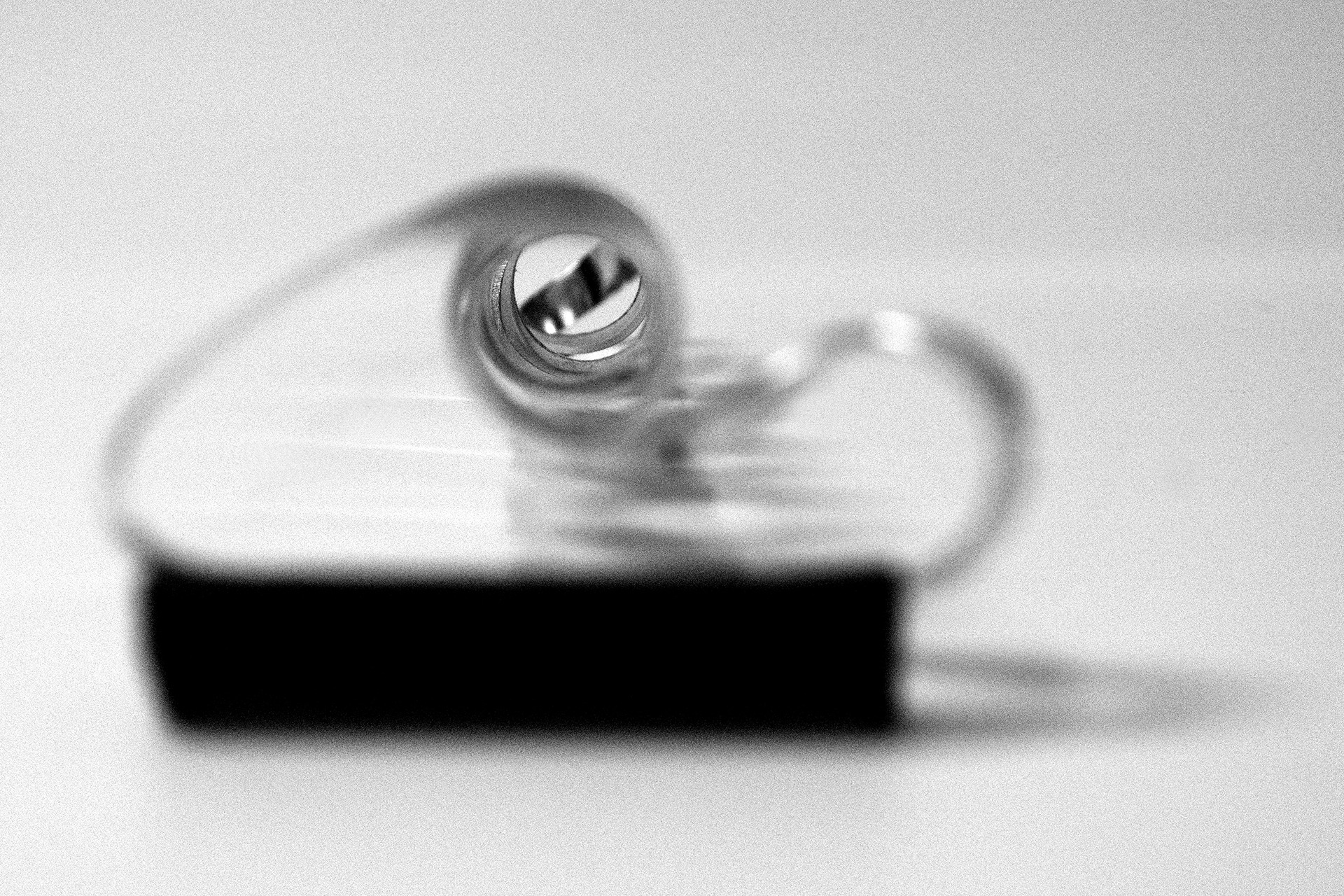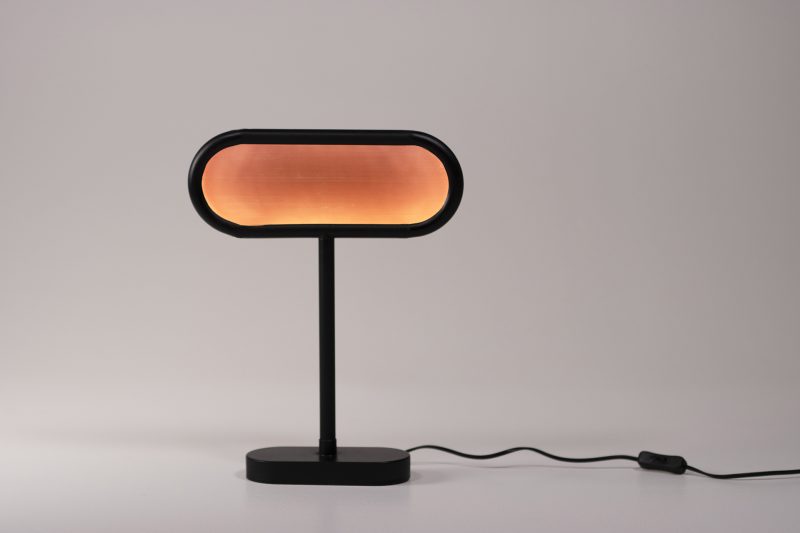While sensation is an essential dimension of the aesthetic world, anaesthesia deals with insensibility in the sense of a loss, suppression or impossibility of perception.
Aesthetics of anaesthesia, the exciting double of the perception of objects in spaces of non-perception, is transferred into three products. The designed collection consists of a night table, mural mirrors and the two operating lamps shown in this article. Each of the developed products refers to specific phenomena of anaesthesia.
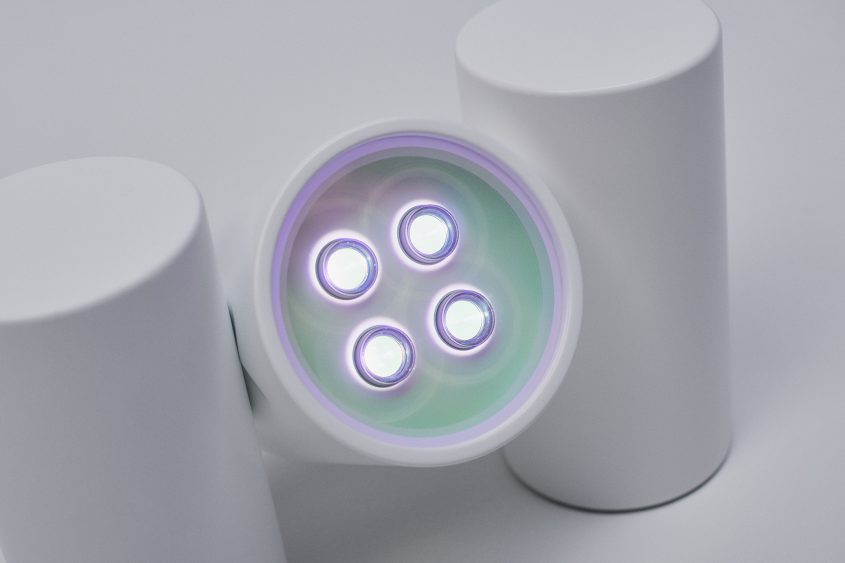
The designed operating lamp elaborates on the aesthetic phenomena of the surgical hall and takes a closer look at the historical concept of the operating theatre. While clinical spaces were public theatres until the 19th century, today’s medical environments are increasingly developing into healing environments.
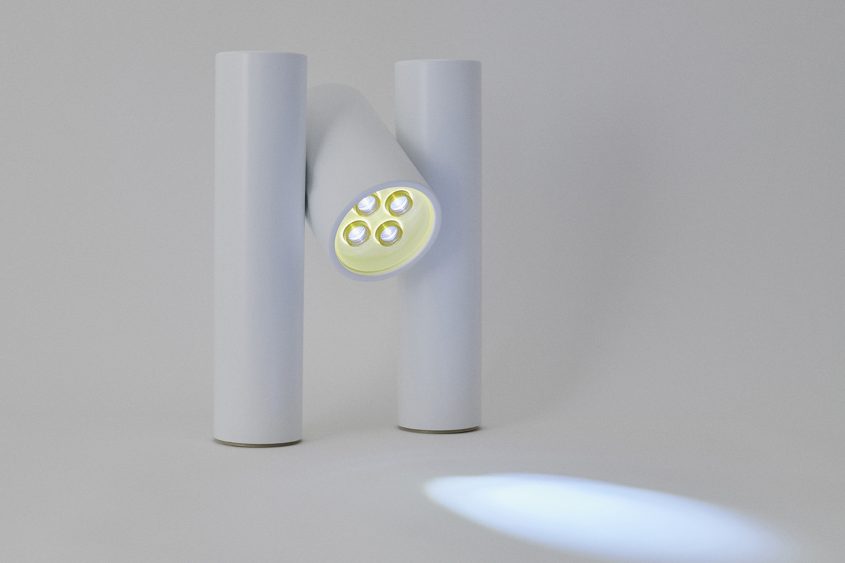
Medical scenography is particularly characterised by a blank white lighting atmosphere. Clinically bright light creates a harsh atmosphere, which is often associated with glare and restlessness. The approach of the designed operating lamp makes use of technical details such as sterile plastics and coatings as well as high-intensity light-emitting diodes, yet gives them a new alternative appearance for lighting in clinical environments.
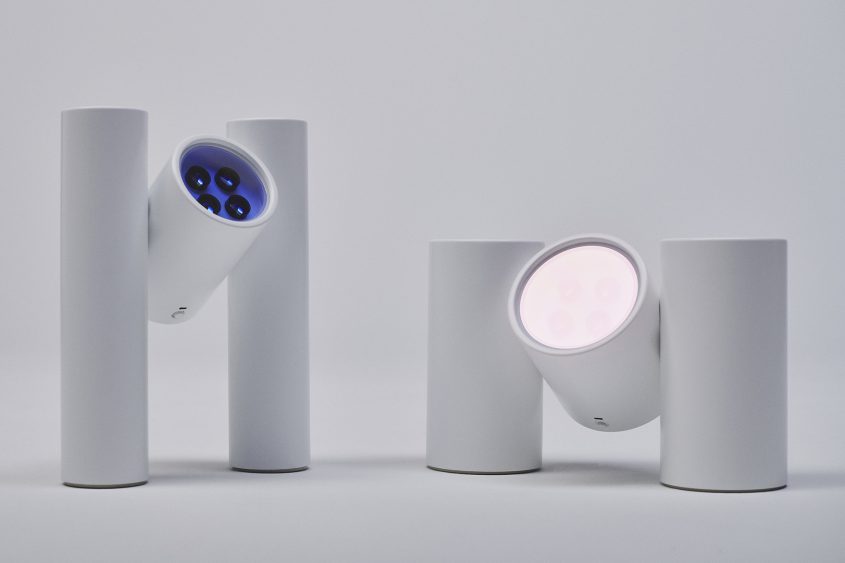
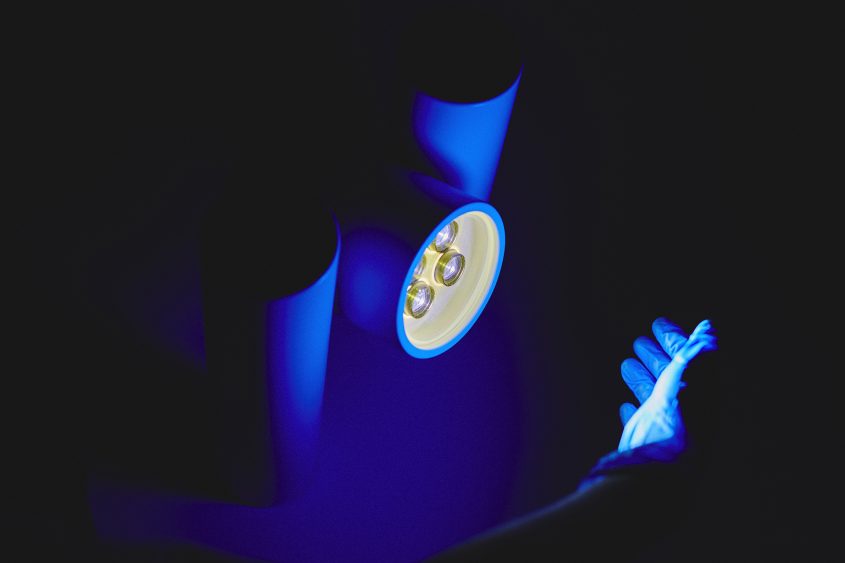
Similar to a theatre stage, light spots are used selectively in the operating theatre to highlight specific areas and make them visible for surgical interventions. The light bundles shine on patients and additionally shimmer on the greenish surgical textiles.
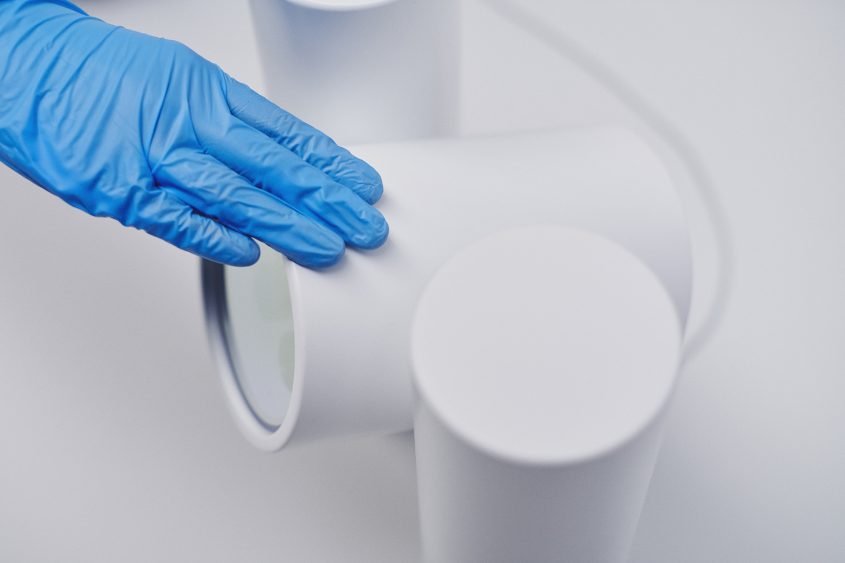
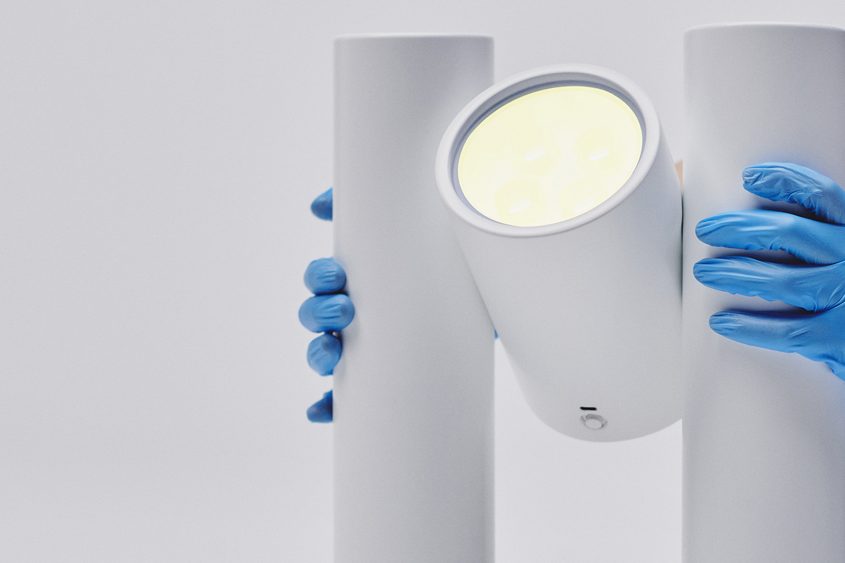
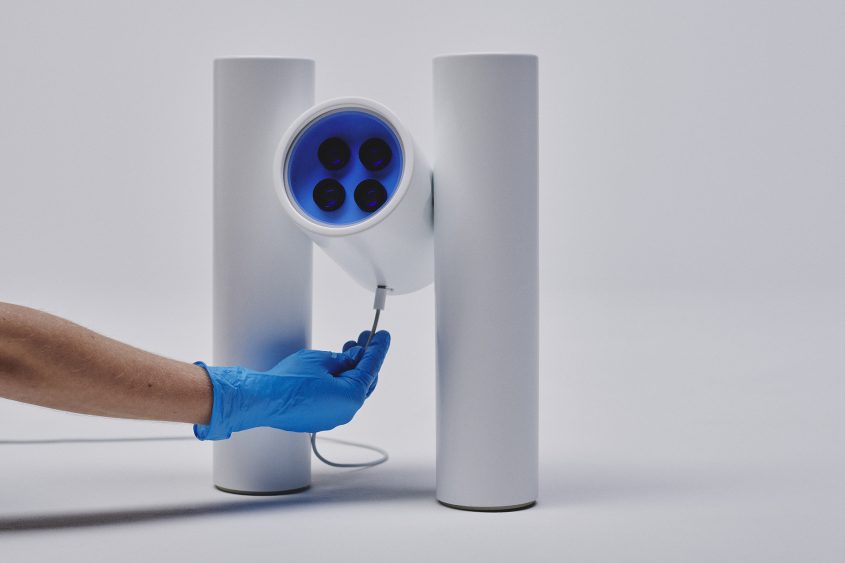
The designed operating lamp floods the clinical theatre and envelops it in a cold light. The pivoting lamp body bundles four light sources into one angle-adjustable beam of light. The operating lamp is portable and rechargeable via a USB-C port.
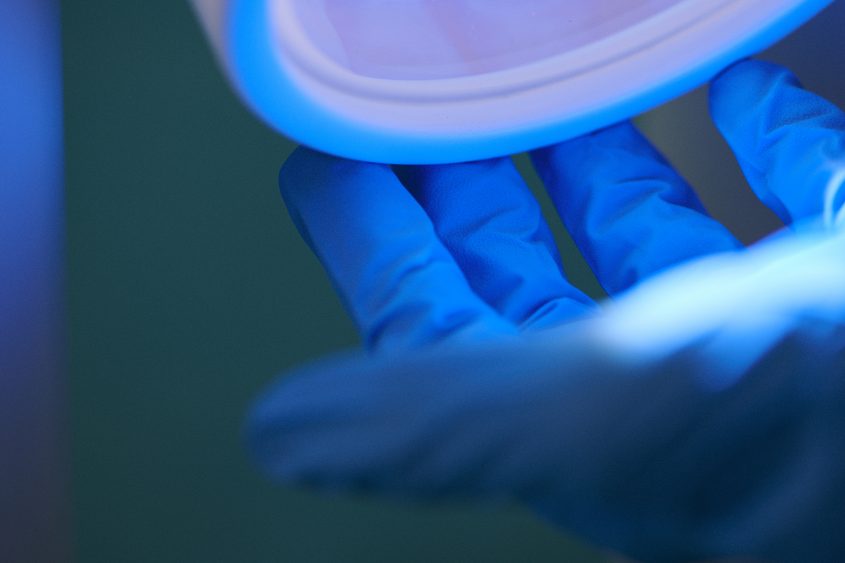

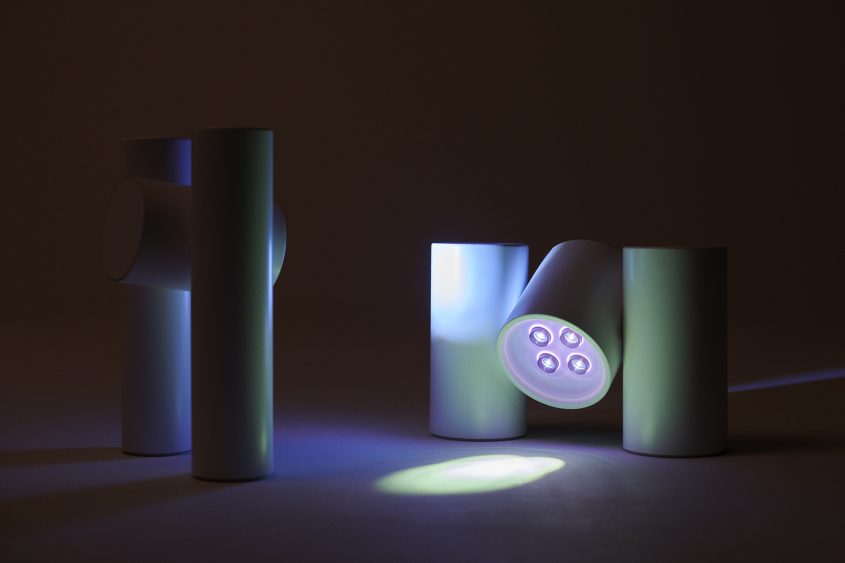
The formal language of the designed surgical luminaire draws on design features of current available medical light models as well as elements of the light spots used in stage settings.
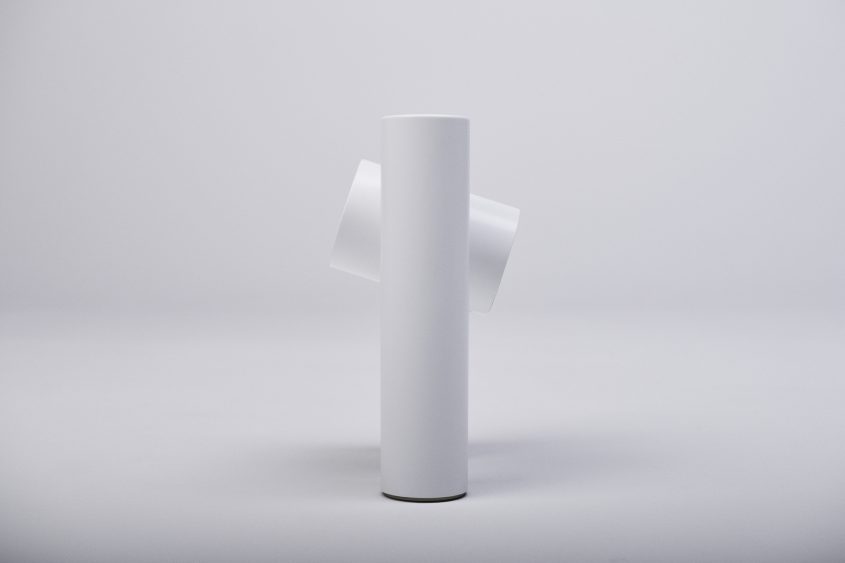
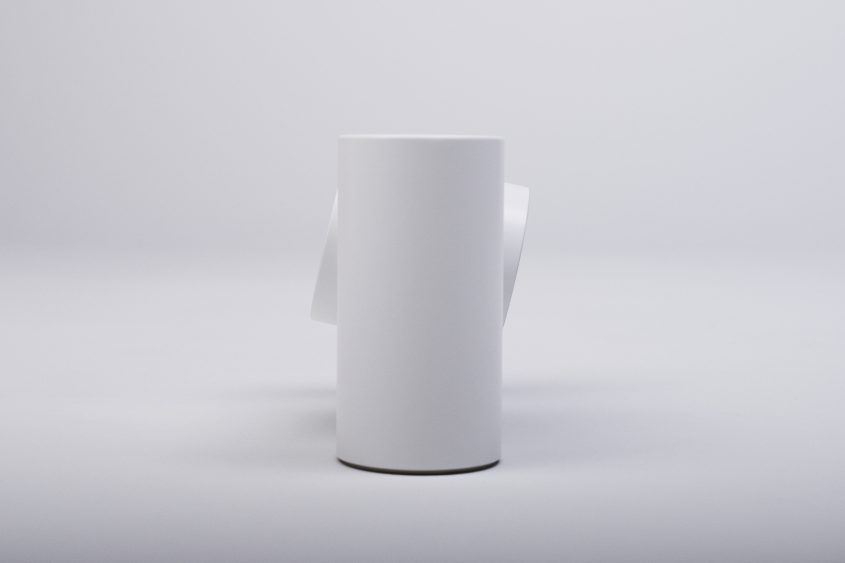
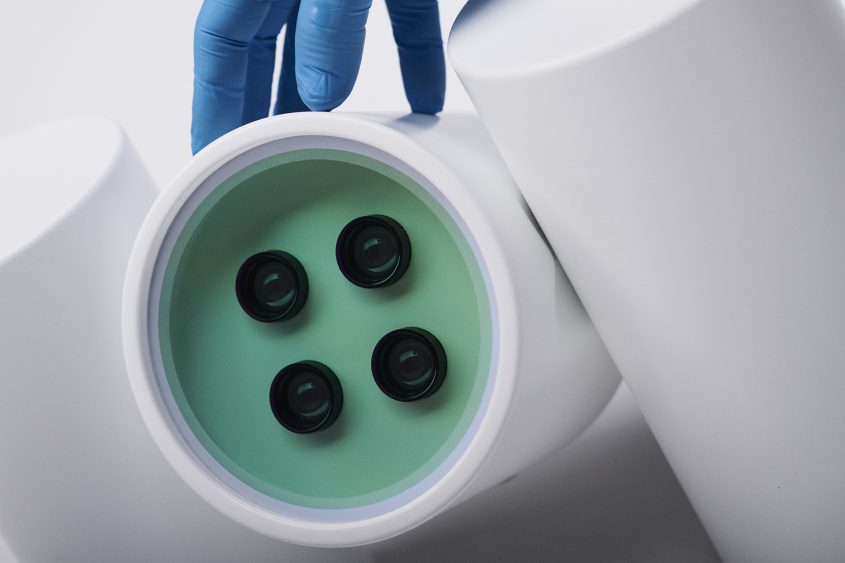
The flat glass lens used is characterised by its dichroic colour effect coating. The glass is dip-coated, which makes it UV-stable, harder and significantly less sensitive to moisture. The outer edge of the glass surface is partially satinised by the abrasive sandblasting process.
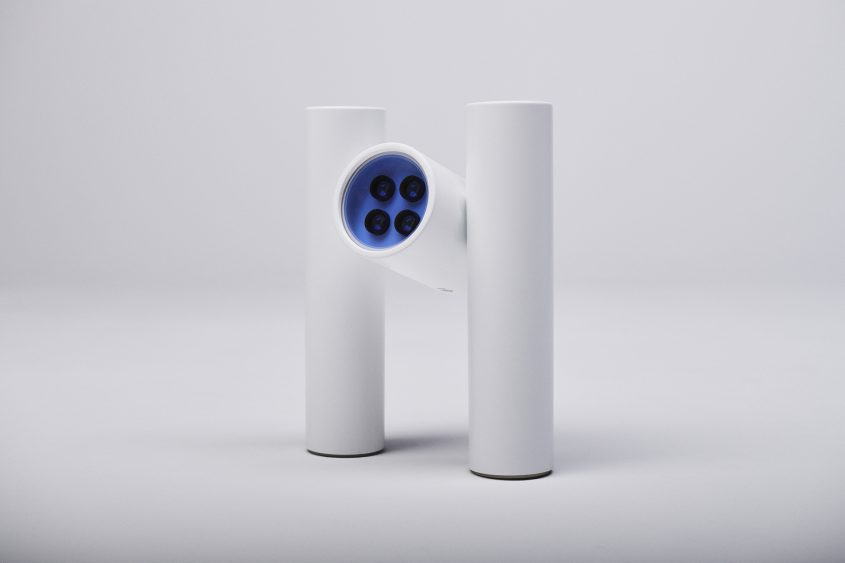
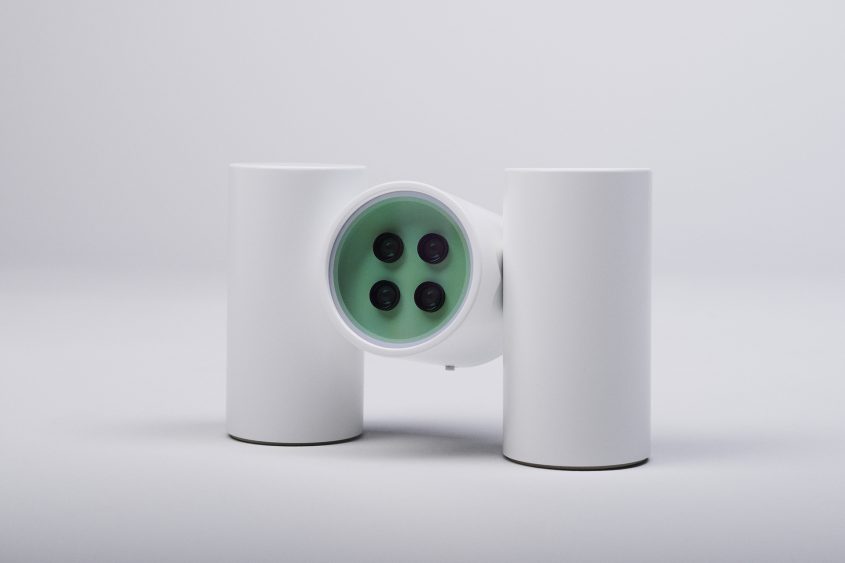
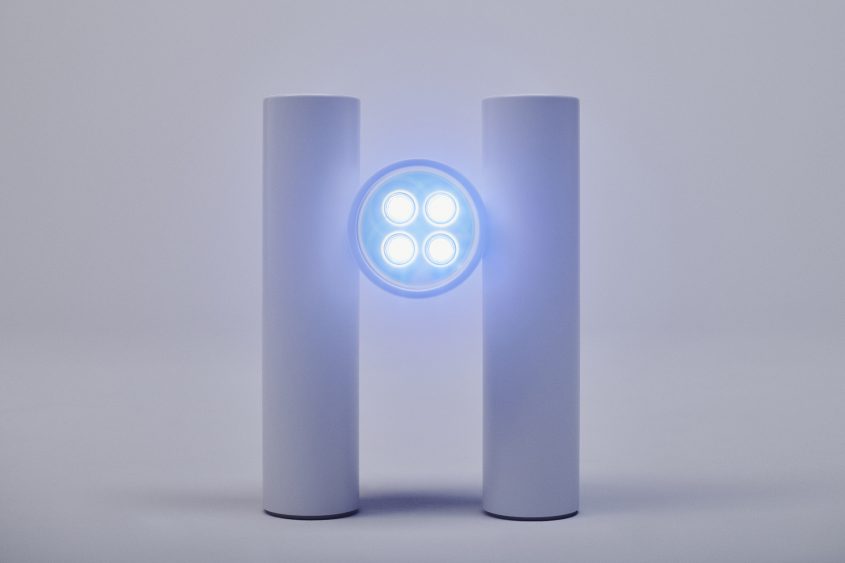
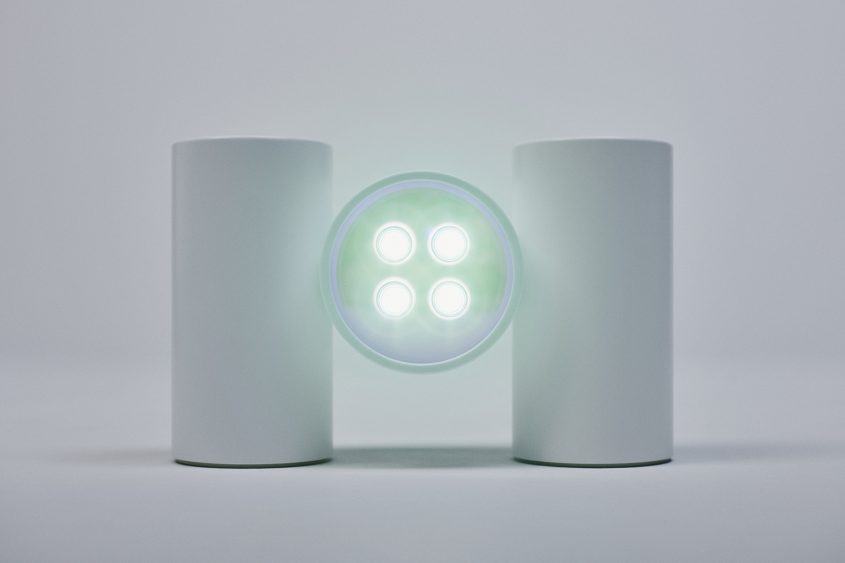
The light-emitting diodes installed in the surgical lamp are characterised by a neutral white light of 4500 Kelvin. The 4 LEDs integrated in the luminaire body with a total light quantity of 8000 lumens provide an illuminance of 7000 lux at a distance of 1 metre.
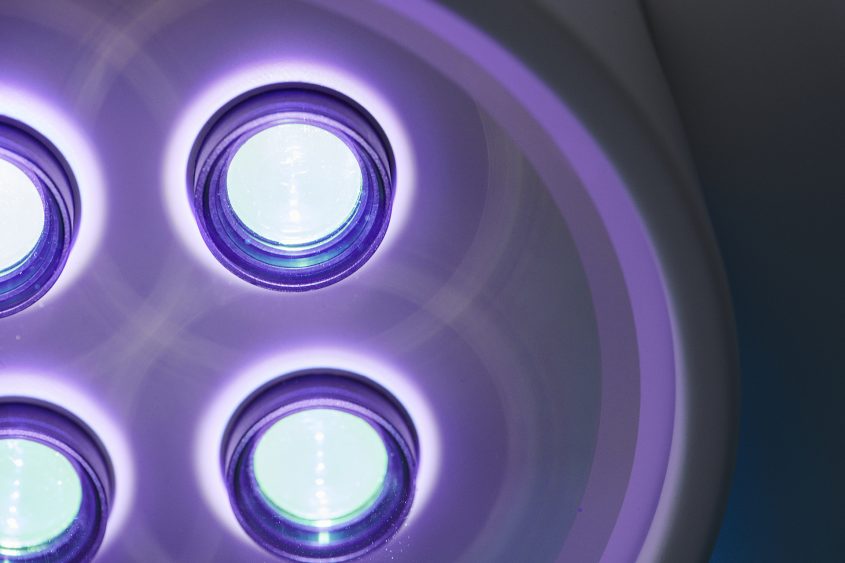
The operating theatre luminaire creates an immersive scene in which light, glass, textile and colour become a spatial experience.
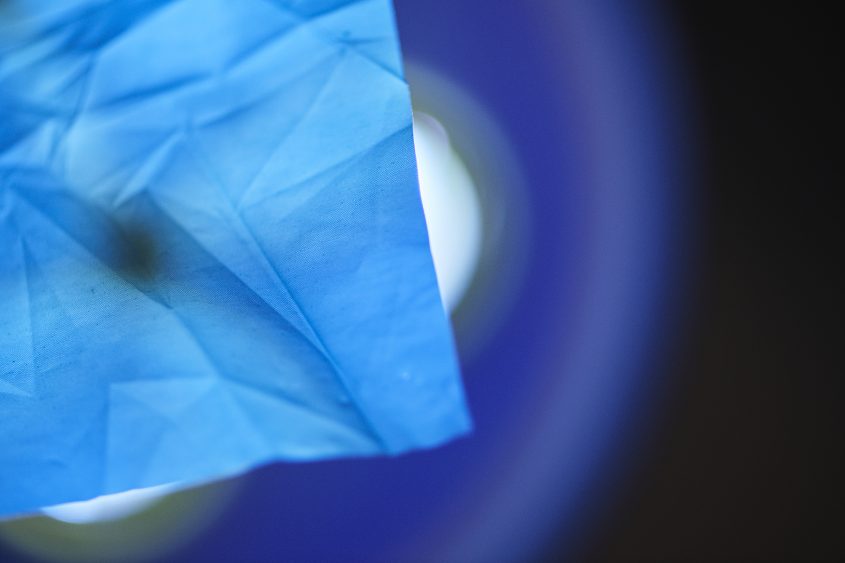
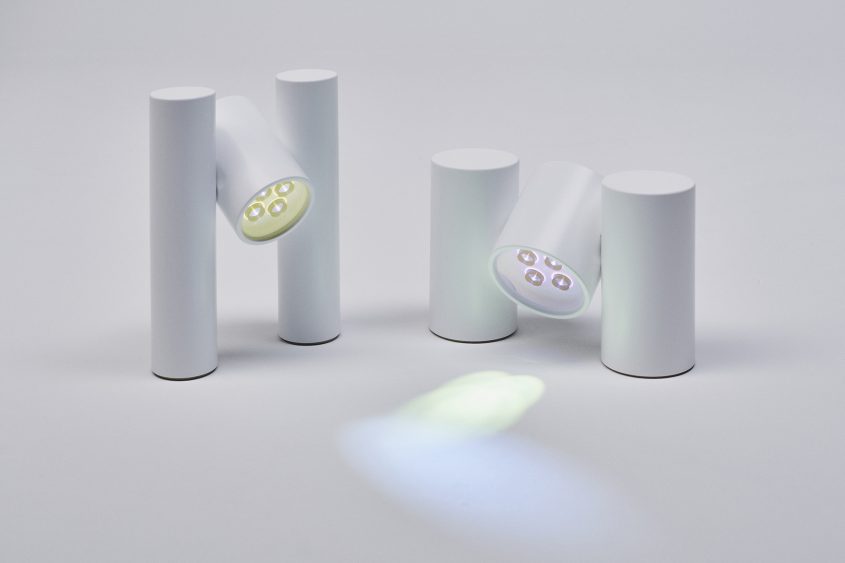
Anaesthesia Concept
Kathrin Alischer
Product Design
Kathrin Alischer
Material
Dichroic glass, medical abs, medical coating, led
Photography
Elia Schmid
